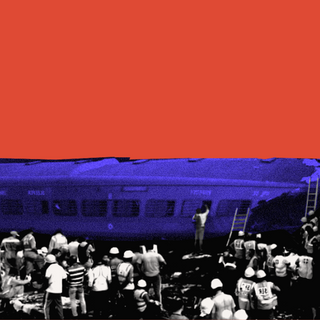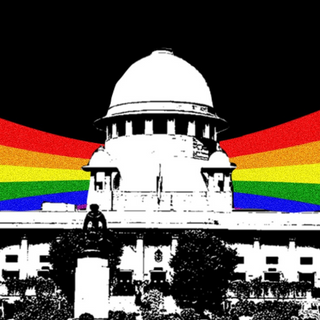
Why the Economic Marginalization of Indian Muslims Is Systemic
Indian Muslims’ access to education, employment, and political representation have all been on the decline.

A Hindustan Times’ data analysis of the All India Debt and Investment Survey (AIDIS) and Periodic Labour Force Survey (PLFS), published on Friday, showed how practitioners of Islam in India “have the lowest asset and consumption levels among major religious groups… they are the poorest religious group in the country [and] over-populate the ranks of the poor in India.”
Indeed, as many as 25% of the beggars on Indian streets are Muslim, past research suggests. This, despite less than 15% of India’s overall population being Muslim, as per the 2011 census. “Muslim Indians are more likely than the country’s Hindus and members of all other religions — including those who don’t belong to a religious group — to be ‘suffering’,” Gallup once highlighted.
This has been decades in the making. In 2010, a National Council for Economic Research report found that 31% Muslims were living below the poverty line. In 2013, another survey by an organization under the Ministry of Statistics and Program Implementation of the Government of India had found Muslims to be the poorest religious group in India. Evidently, the problem goes deeper than we’re willing to acknowledge. As Quartz had noted in 2018, “India may have lifted at least 170 million people out of poverty since 1990… [Muslims] have become the least upwardly mobile group in India.”
“There is often a lot of dog-whistling about the population of Muslims increasing at a higher pace than other religious groups in India,” journalists Abhishek Jha and Roshan Kishore wrote in their analysis in Hindustan Times. Explaining how “such commentary is ill-informed,” they added: “Muslims do have an overrepresentation problem when it comes to their relative share in population among the poor… [They] are concentrated in the bottom half of India’s population and outnumber the Hindus in relative terms in each of the bottom six deciles.” The resultant poverty, then, reinforces the very systemic biases that triggered it.
Related on The Swaddle:
Census 2021 Will Not Include Caste‑Wise Data Despite Demands From Activists, Politicians
There are many structural economic barriers to consider, from poorer access to education and housing, to myriad instances of religious discrimination. As another set of researchers had once noted, “While Muslim disadvantage has been widely noted… there are few policies in place to protect them and there has not been an effective political mobilization in their interest. Muslims have also been frequent targets of discrimination and even violence.” That India has, historically, borne witness to multiple counts of communal violence, is a well-documented fact. In fact, almost 3,000 cases of communal violence were registered in India between 2017 and 2021, according to government data.
Data also suggests that Muslims in India have the lowest rate of enrollment in higher education. This disparity can be attributed to a number of reasons — ranging from inadequate educational infrastructure in Muslim-majority areas that entail both a shortage of schools and a lack of trained teachers, alongside the socio-economic factors of poverty and discrimination that pile on as limitations to educational opportunities for Muslim children.
Worse still, the enrollment numbers of Muslim students decreased by 8% — translating to a drop in 1,79,147 students — between 2019 and 2020, according to a report that stated: “Muslim community is the only category to experience an absolute decline, while other communities have witnessed an overall increase in enrolment.” Leading the decline were states like Uttar Pradesh, Jammu and Kashmir, Maharashtra, Tamil Nadu, Gujarat, Bihar, and Karnataka.
“[T]he low share of Muslims among the better jobs in India need not necessarily be a result of discrimination in the hiring process. Rather, it could be the result of Muslim job-seekers lagging in terms of educational qualifications, which is bound to have a big role in employability,” explain Jha and Kishore. But even if communal politics don’t play a direct part in the positioning of the economic barriers that Indian Muslims face, they are at work behind the scenes.
Related on The Swaddle:
How Making Fun of Cultural Stereotypes Keeps People From Bonding With Their Communities
Political representation of Muslims in government is also dwindling. In 2022, the ruling party was left with no Muslim MP for the first time in its history; at the Center today, there is no Muslim minister.
Even access to adequate housing, which plays a vital role in determining one’s overall quality of life, is denied to Muslims — forcing them to confront discriminatory practices in the rental and real estate markets, making them feel unsafe and unwelcome and limiting their scope of migration. “My religion had never bothered me until it came to looking for a place to rent. Suddenly, it became the biggest issue. I’ve had property owners say, ‘We don’t rent to Muslims as a policy’… I’ve also had elderly property owners use their children abroad as an excuse to say, ‘Muslims don’t bother me, but my children in the US are uncomfortable,'” Fathima, 36, told The Swaddle last July.
“[Muslims in India] are desperately in need of overall educational and economic upliftment… one cannot but ask the question whether or not the majoritarian turn in India’s politics has relegated the economic concerns of majority of Muslims behind their concerns over identity,” Jha and Kishore note.
Contributing to the economic disadvantage of Indian Muslims, these barriers work together to trap them in a cycle of poverty. Breaking those shackles would likely be impossible without a comprehensive approach that tackles all — socio-economic, cultural, and political — elements that are responsible for the present state of affairs.
Devrupa Rakshit is an Associate Editor at The Swaddle. She is a lawyer by education, a poet by accident, a painter by shaukh, and autistic by birth. You can find her on Instagram @devruparakshit.
Related


The Marriage Equality Hearings: Week 4
